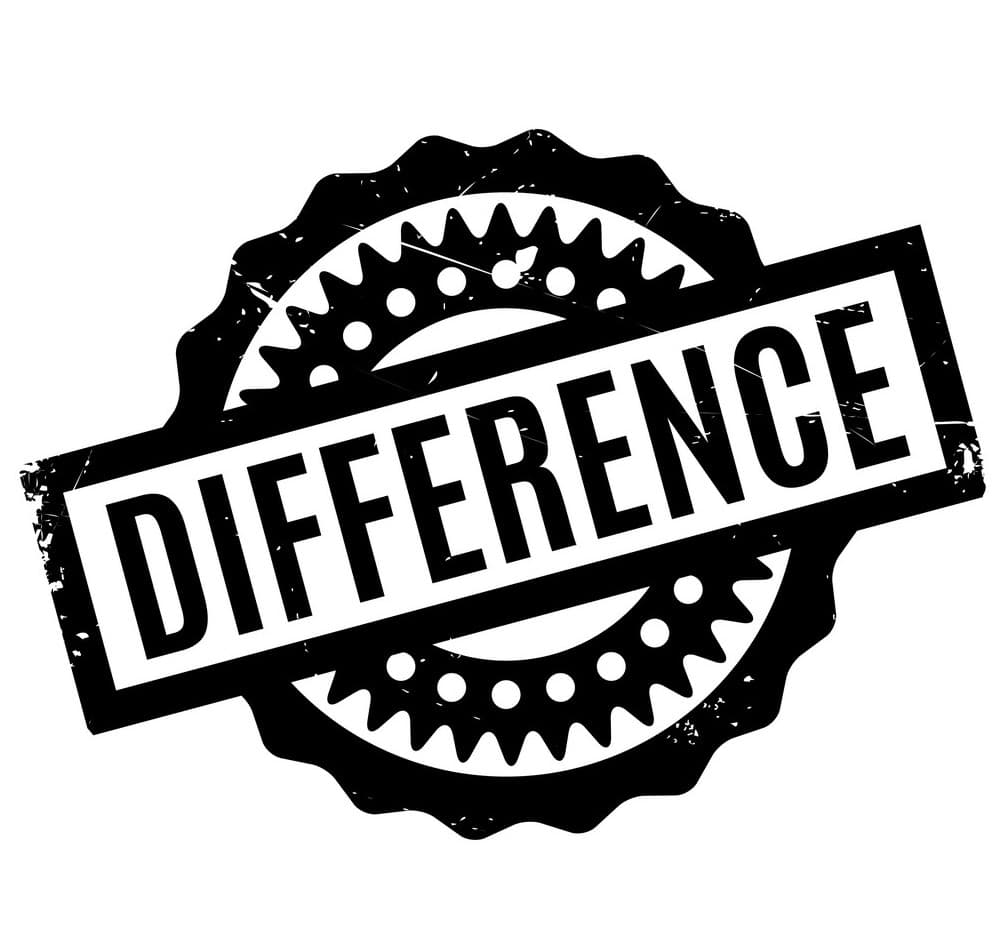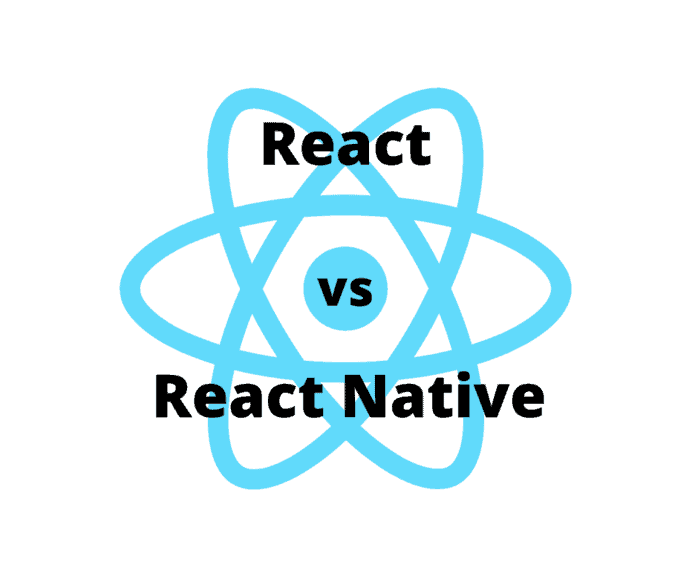
React vs React Native: Unraveling the Differences and Use Cases
by Irina KedyarovaSeptember 29th, 2023
Summary
What’s React? What’s React Native?
React Native vs ReactJS: How Do They Work?
The Advantages: React Js vs React Native
The Drawbacks: React Js vs React Native
Difference Between React and React Native
What is the best one of them to study?
FAQs
Scroll to read all the article.
What’s React? What’s React Native?
React:
React, also known as React.js or ReactJS, is an open-source JavaScript library used for building user interfaces (UIs) on websites. Developed by Facebook, React is highly popular among web developers. It follows a component-based architecture, allowing developers to create interactive and dynamic web applications by breaking down the user interface into reusable components. Key features of React include its virtual DOM for efficient updates, JSX syntax for writing HTML-like code in JavaScript, and a large and active developer community. React is an excellent choice for web developers who want to create responsive and interactive web applications.
React Native:
React Native is a framework created by Facebook for building mobile applications using JavaScript and React. Unlike traditional mobile app development, which often requires separate codebases for iOS and Android, React Native enables cross-platform development. This means you can write code once and use it on both iOS and Android platforms, saving time and effort. React Native provides near-native performance by allowing direct access to native components and device features. It is particularly useful for projects that require rapid prototyping or need to target multiple mobile platforms with a single codebase.
React Native vs ReactJS: How Do They Work?
ReactJS (React):
How it Works:
ReactJS, often referred to as React, is a JavaScript library used for building user interfaces (UIs) for web applications. It follows a component-based architecture, which means developers create reusable UI components that can be composed to build complex user interfaces.
Key Concepts:
Components: React revolves around the concept of components. Developers create individual components for different parts of the UI, such as buttons, forms, or headers.
Virtual DOM: React uses a virtual representation of the actual Document Object Model (DOM) called the Virtual DOM. When data changes in a React application, it updates the Virtual DOM first, then efficiently updates the real DOM, reducing the need for manual DOM manipulation.

JSX: JSX is a syntax extension for JavaScript that allows developers to write HTML-like code within JavaScript. This makes it easier to define the structure of UI components.
Unidirectional Data Flow: React enforces a one-way data flow, which means data flows in a single direction from parent to child components. This simplifies data management and debugging.
Use Cases:
React is primarily used for building web applications. It excels in scenarios where developers need to create dynamic, interactive, and highly responsive user interfaces.
React Native:
How it Works: React Native is a framework for building mobile applications using JavaScript and React. It extends the React library to enable cross-platform development, allowing developers to write code that can run on both iOS and Android devices.
Key Concepts:
Native Components: React Native provides a set of components that map directly to native UI components on iOS and Android devices. This enables the creation of truly native mobile apps.
JavaScript Bridge: React Native apps run JavaScript code that communicates with native modules via a JavaScript bridge. This allows access to device features and native functionality.
Hot Reloading: Developers can see the immediate effects of code changes in the app during development, making the development process more efficient.
Code Reusability: A significant portion of code and components can be shared between iOS and Android platforms, reducing development time and effort.
Use Cases:
React Native is ideal for mobile app development, especially when there's a need to target both iOS and Android platforms with a single codebase. It is a valuable choice for projects that require rapid prototyping and access to native device features.
The Advantages: React Js vs React Native
Advantages of ReactJS (React):
Reusable Components:
React's component-based architecture allows developers to create reusable UI components. This modularity simplifies development, maintenance, and testing of web applications.
Efficient Updates with Virtual DOM:
React uses a Virtual DOM to track changes in data and efficiently update the actual DOM. This approach minimizes unnecessary re-renders and boosts application performance.
Large and Active Community:
React has a vast and active community of developers. This means there are plenty of resources, libraries, and third-party components available to enhance development speed and quality.
JSX for Declarative UI:
JSX, a syntax extension for JavaScript, makes it easy to define the structure of UI components. It combines HTML-like syntax within JavaScript, providing a clear and concise way to describe the user interface.
One-Way Data Flow:
React enforces a unidirectional data flow, which simplifies data management and makes it easier to understand how data changes propagate through the application.
SEO-Friendly:
React is SEO-friendly due to its ability to render content on the server-side. This makes it easier for search engines to crawl and index web pages, improving search engine optimization.
Backed by Facebook:
React is maintained by Facebook, ensuring its continuous development and support. This backing provides confidence to developers and businesses using the technology.
Advantages of React Native:
Cross-Platform Compatibility:
React Native allows developers to build mobile apps that work on both iOS and Android platforms using a single codebase. This significantly reduces development time and effort.
Near-Native Performance:
React Native provides near-native performance by rendering components using native UI elements. This results in fast and responsive mobile apps.
Code Reusability:
A substantial portion of code, including business logic and components, can be shared between iOS and Android apps. This promotes code consistency and simplifies maintenance.
Hot Reloading:
React Native supports hot reloading, allowing developers to see immediate changes in the app as they modify the code. This speeds up the development process and aids in debugging.
Access to Native Features:
React Native provides access to native device features and APIs, enabling developers to incorporate device-specific functionality into their apps, such as GPS, camera, and sensors.
Community and Ecosystem:
Similar to React, React Native has a thriving community and ecosystem. Developers can leverage a wide range of third-party libraries and plugins to extend app functionality.
Cost-Efficient:
Developing with React Native can be more cost-efficient for businesses because it reduces the need to maintain separate codebases for iOS and Android.
Rapid Prototyping:
React Native's fast development cycle and live updates make it an excellent choice for rapid prototyping and iterating on app ideas.
In summary, ReactJS is favored for web development, offering reusability, efficient updates, and SEO benefits, while React Native excels in mobile app development by providing cross-platform compatibility, near-native performance, and code reusability, making it a powerful choice for building mobile applications efficiently.

The Drawbacks: React Js vs React Native
Drawbacks of ReactJS (React):
Learning Curve:
React has a learning curve, especially for developers who are new to component-based architectures and JSX syntax. It may take some time to grasp these concepts fully.
Complex Setup:
Setting up a React project can be complex, especially for beginners. It often requires configuring build tools like Webpack and Babel to transpile JSX and ES6 code to browser-compatible JavaScript.
Boilerplate Code:
React applications can require a fair amount of boilerplate code, which can increase development time and code verbosity.
Performance Overhead:
While React's Virtual DOM optimizes updates, it can introduce performance overhead in very large applications, as the entire Virtual DOM needs to be reconciled.
Ecosystem Changes:
React's rapid development pace sometimes leads to changes in the ecosystem, including deprecated features and APIs. This can require developers to update and adapt their code frequently.
Drawbacks of React Native:
Limited Native Modules:
Although React Native provides access to many native modules and APIs, it may not cover all possible device features. Developers may need to write custom native code (in Objective-C or Java) for certain functionalities.
Platform-Specific Code:
While React Native promotes code reusability, there are cases where platform-specific code is required. This can complicate the development process and reduce the benefits of a shared codebase.
Large App Size:
React Native apps can be larger in size compared to fully native apps because they include JavaScript runtime and native bridge components. This can affect app download and installation times.
Performance Limitations:
Although React Native offers near-native performance, it may not match the performance of fully native apps in all scenarios, especially in graphics-intensive applications.
Community Dependencies:
React Native's ecosystem relies heavily on community-contributed libraries and modules. The quality and maintenance of these dependencies can vary, leading to potential compatibility issues.
Debugging Challenges:
Debugging React Native apps can be more challenging compared to web development because issues may arise from both JavaScript and native code. Tools like React Native Debugger can help but have limitations.
Version Compatibility:
Keeping React Native up-to-date with the latest native libraries and device features can be challenging. Version mismatches between React Native and native modules can cause compatibility issues.
In conclusion, while ReactJS offers advantages for web development, it comes with challenges related to the learning curve and complex setup. React Native, on the other hand, provides efficient cross-platform development but may require platform-specific code and faces challenges related to app size and performance. Developers and businesses should carefully consider these drawbacks when choosing between React and React Native for their projects.
Difference Between React and React Native

Let's explore the key differences between React and React Native:
1. Platform:
React (ReactJS): React is primarily used for web development. It allows developers to build user interfaces (UIs) for web applications that run in web browsers.
React Native: React Native is used for mobile app development. It enables developers to create mobile applications that run on both iOS and Android platforms using a single codebase.
2. User Interface Rendering:
React (ReactJS): React renders user interfaces in web browsers using HTML and CSS. It generates and manipulates the Document Object Model (DOM) to display content.
React Native: React Native renders user interfaces using native components specific to the target mobile platform (iOS or Android). This results in a more native look and feel for mobile apps.
3. Code Reusability:
React (ReactJS): React components are designed for web applications. While some code and logic can be reused in different parts of a web app, React components are not directly reusable in React Native.
React Native: React Native promotes code reusability between iOS and Android apps. A significant portion of code, including business logic and components, can be shared, reducing development effort and promoting consistency.
4. Access to Device Features:
React (ReactJS): React is primarily focused on web development and does not provide direct access to native device features, such as GPS or camera, without using additional libraries or APIs.
React Native: React Native provides access to native device features and APIs. Developers can incorporate device-specific functionalities seamlessly into their mobile apps.
5. Development Environment:
React (ReactJS): Developing with React typically requires web development tools, including web browsers and development servers.
React Native: Developing with React Native requires a mobile development environment, including simulators/emulators and device testing.
6. Performance:
React (ReactJS): React applications may not achieve the same level of performance as native mobile apps because they render content in web browsers. Performance can vary depending on the complexity of the application.
React Native: React Native apps offer near-native performance by rendering UI components using native elements, resulting in fast and responsive mobile apps.
7. Third-Party Libraries:
React (ReactJS): React has a rich ecosystem of libraries and tools focused on web development, including state management libraries like Redux and routing libraries like React Router.
React Native: React Native also has a thriving ecosystem, but it consists of libraries and components tailored specifically for mobile app development.
In summary, React is designed for web development and uses web technologies like HTML and CSS, whereas React Native is intended for mobile app development and uses native components for rendering. React Native promotes code reusability between iOS and Android, provides access to device features, and offers near-native performance, making it a powerful choice for cross-platform mobile development.
What is the best one of them to study?
The choice between studying React (ReactJS) and React Native depends on your specific goals and interests in software development. Both technologies are valuable and have their own use cases. Here are some factors to consider:
Study React (ReactJS) if:
1) You are interested in web development:
If your primary interest is building web applications, websites, or web-related projects, React (ReactJS) is the better choice. It's widely used in the web development industry and is an essential skill for front-end developers.
2) You want to focus on front-end development:
React is a key tool for front-end developers who specialize in creating user interfaces and enhancing the user experience of web applications.

3) You enjoy working with web technologies:
If you have a passion for working with HTML, CSS, and JavaScript, React (ReactJS) will align well with your interests, as it's based on these core web technologies.
Study React Native if:
1) You are interested in mobile app development:
If your goal is to build mobile applications for iOS and Android platforms, React Native is the better choice. It allows you to create cross-platform mobile apps efficiently.
2) You want to maximize code reusability:
React Native's main advantage is code reusability between different mobile platforms. If you value the ability to write code once and use it on both iOS and Android, React Native is a valuable skill.
3) You are interested in native mobile features:
If you want to leverage native device features like GPS, camera, and sensors in your applications, React Native provides direct access to these functionalities.
Ultimately, the "best" choice depends on your career goals and the types of projects you want to work on. Many developers choose to learn both React and React Native because they complement each other well. Having skills in both technologies allows you to work on a broader range of projects and increases your versatility as a developer.
Consider your long-term career aspirations and the type of development work that excites you when making your decision. Additionally, keep in mind that the technology landscape is always evolving, so staying adaptable and open to learning new tools and frameworks is essential in the field of software development.
Best Frequently Asked Questions (FAQs)
In conclusion, React and React Native are two powerful technologies that cater to distinct domains of application development. The choice between them depends on your project requirements, team expertise, and the specific constraints you face. By understanding their strengths and differences, you can make an informed decision that aligns with your development goals.
Comments
I started with React for web development and found it to be a fantastic library for building user interfaces. When I ventured into mobile app development, React Native seemed like a logical choice. Learning both React and React Native was a valuable decision. I can't emphasize enough how much code reusability matters, and React Native delivers on that front.
Eric H.
Leave your comment
Your feedback is very important to us. Share your thoughts on what you read, or tell your own story.
Rating
Readers also enjoyed

In today's digital age, e-commerce has revolutionized the way businesses operate and consumers shop. One significant development in the e-commerce landscape is the emergence of multivendor marketplaces. These platforms have gained immense popularity due to their ability to connect sellers with a vast pool of customers and provide a seamless shopping experience. This article delves into the concept of multivendor marketplaces, exploring their benefits, challenges, and their impact on the e-commerce ecosystem.
July 17th, 2023

In the ever-evolving world of web development and technology, the Jamstack has emerged as a powerful approach for building fast, secure, and scalable websites. As businesses strive to provide seamless user experiences and leverage the latest advancements in web development, the need for Jamstack agencies has become increasingly important. In this article, we will explore the concept of a Jamstack agency, its benefits, and why it can be a game-changer for your web development projects.
July 14th, 2023

In the fast-paced world of web development, staying ahead of the curve is essential. One approach that has gained significant attention is Jamstack CMS. This article aims to unravel the concept of Jamstack CMS, its advantages, implementation best practices, and more. Whether you're a seasoned developer or a content creator looking to enhance your website's performance, join us as we dive into the fascinating realm of Jamstack CMS. By the end of this article, you'll have a solid understanding of how Jamstack CMS can revolutionize your web development workflow. So, let's embark on this journey and unlock the potential of Jamstack CMS together!
July 13th, 2023
Contact Us
Our email is manager@alt-team.com
Please, do not hesitate to contact us via e-mail or use the form below if you need a quote for your E-commerce project or have any questions about our products or services. We will be glad to answer you in a short time.